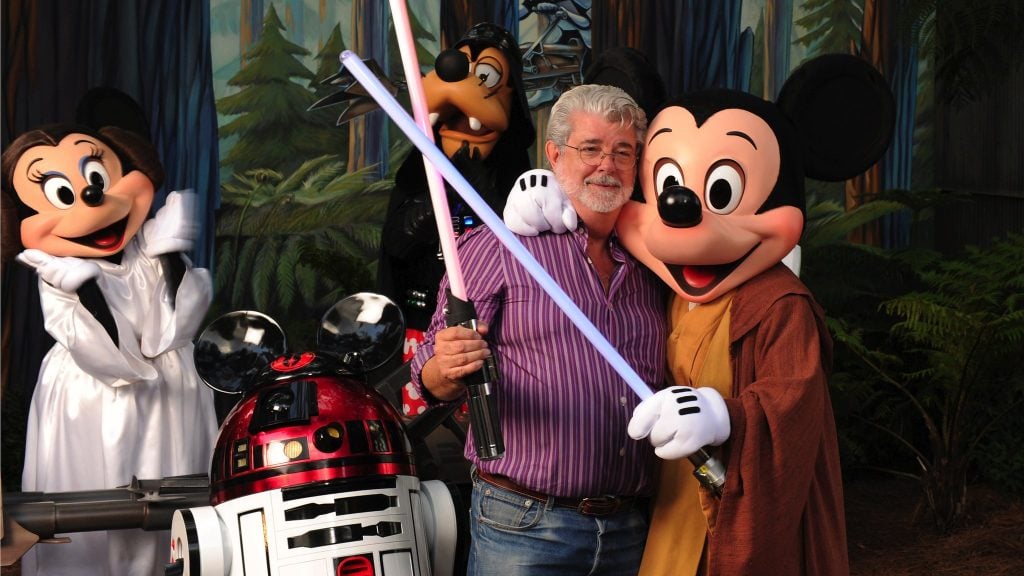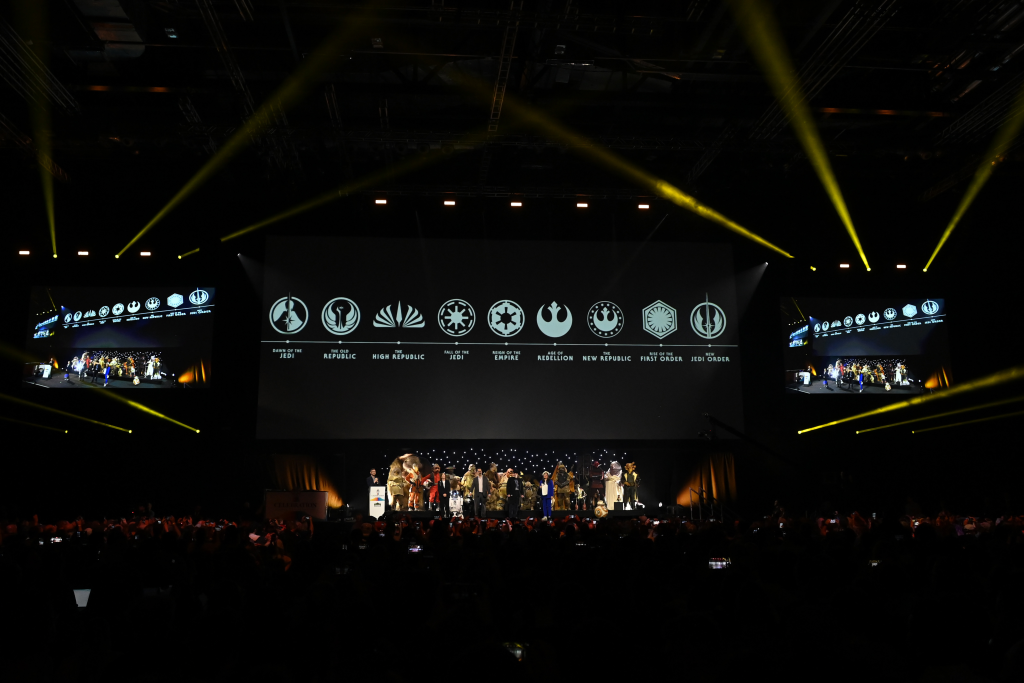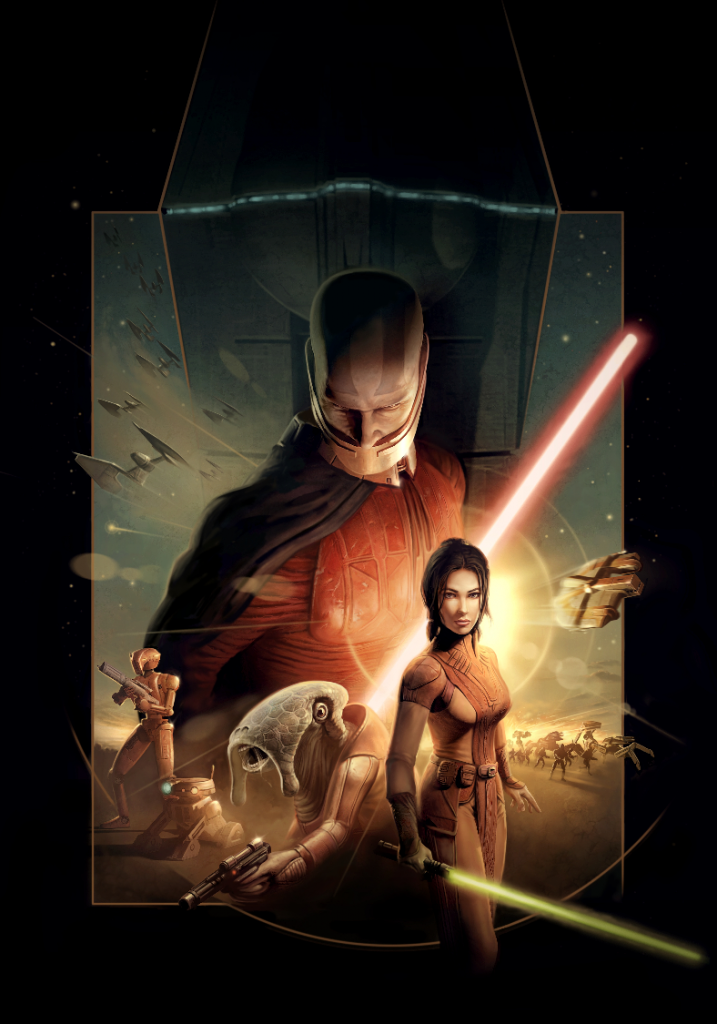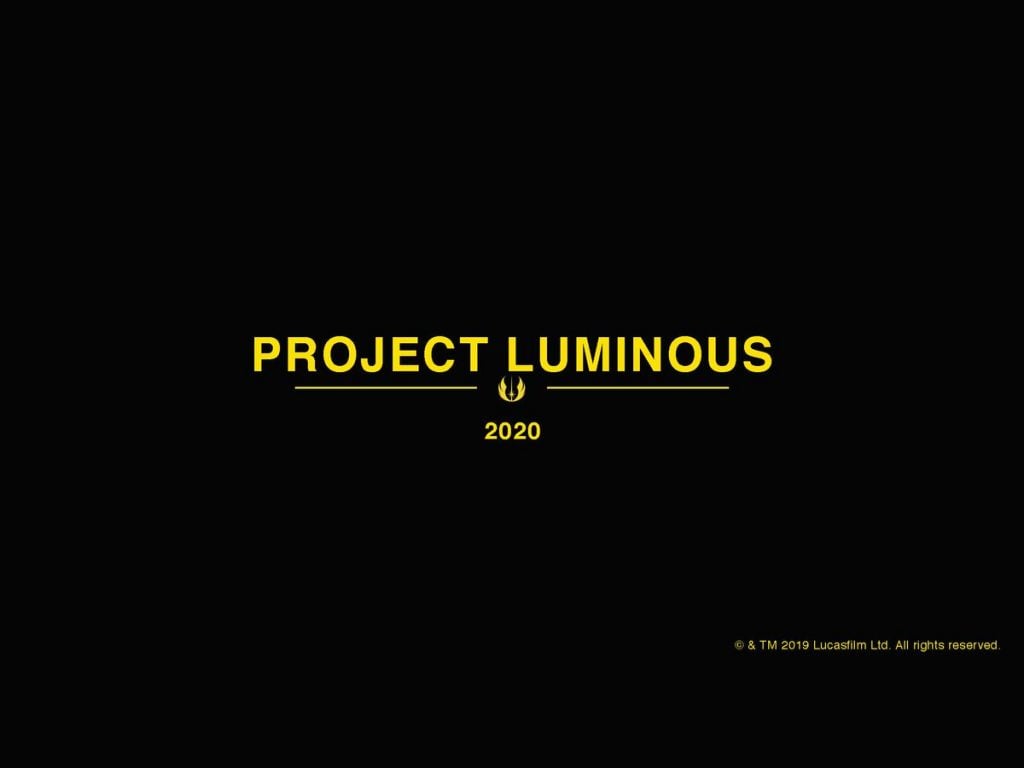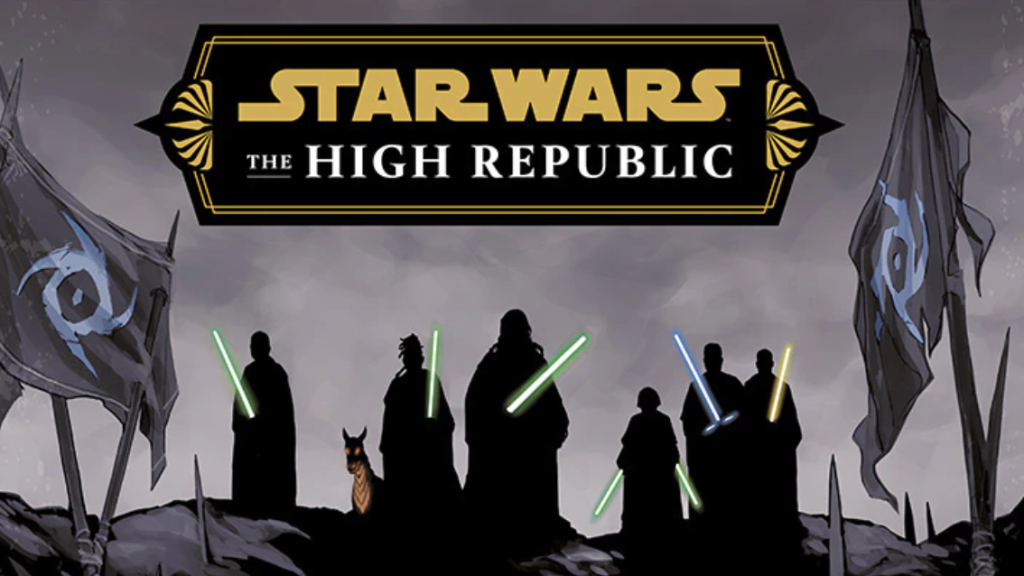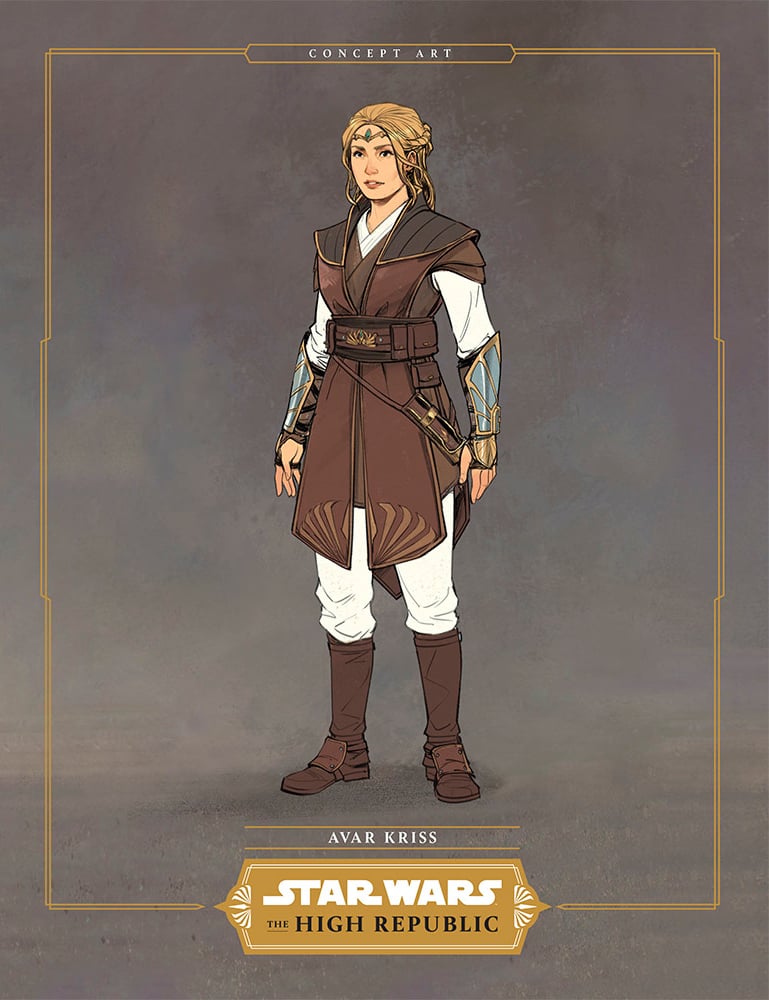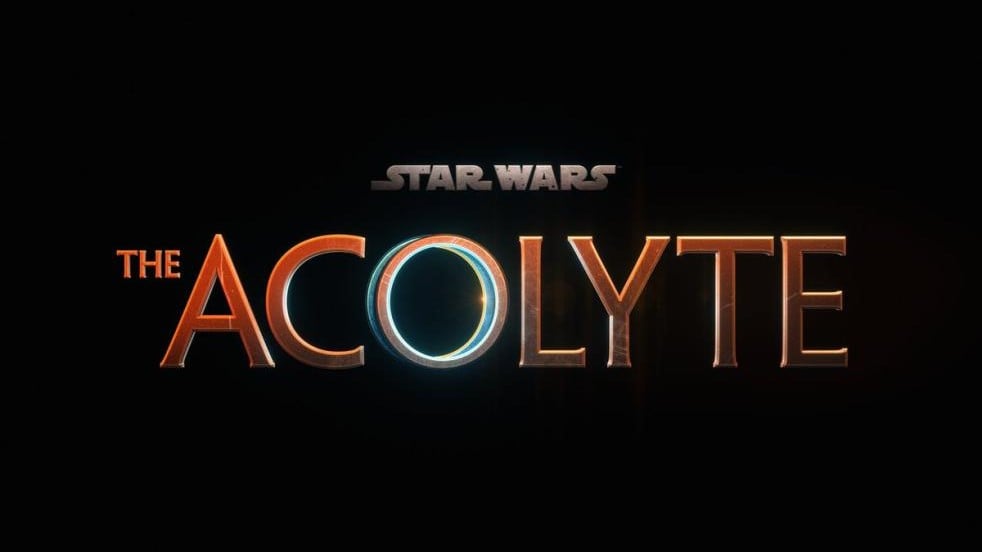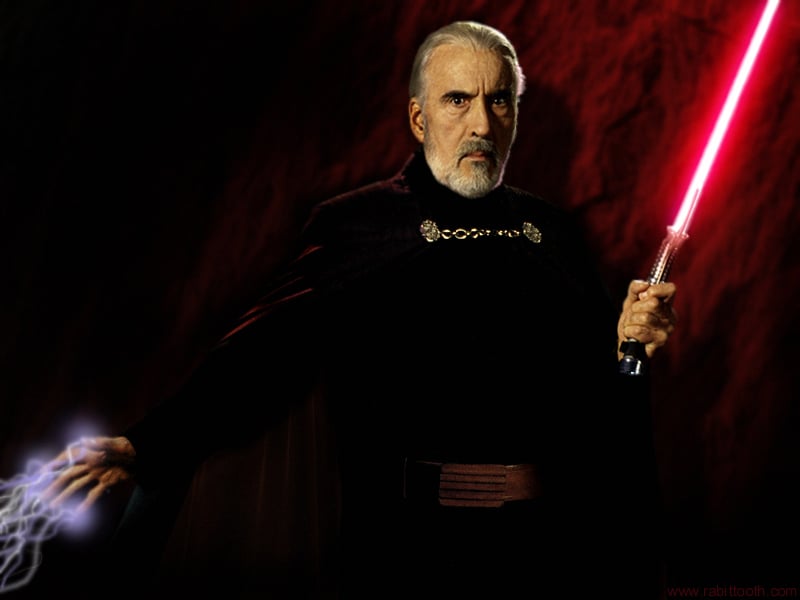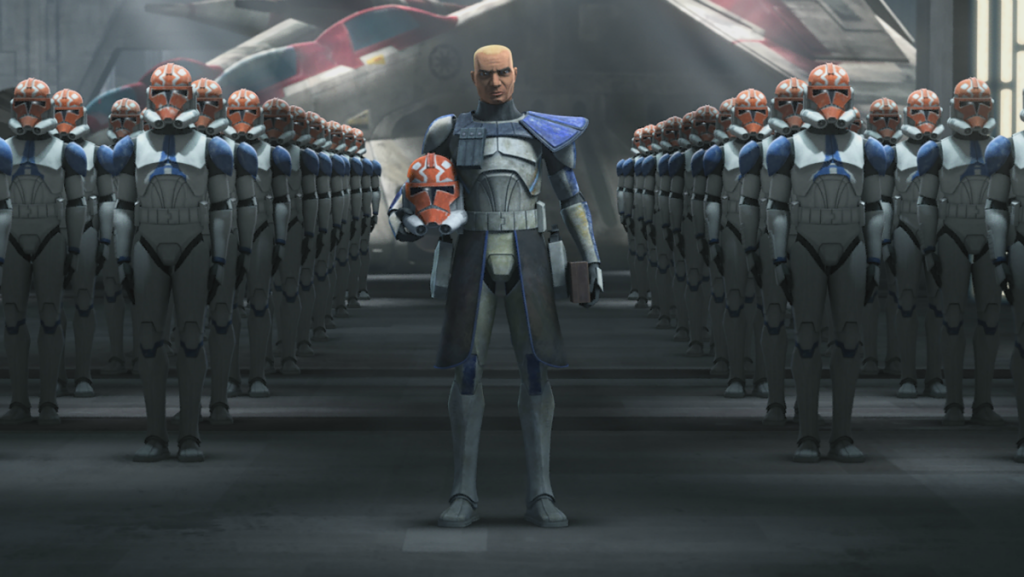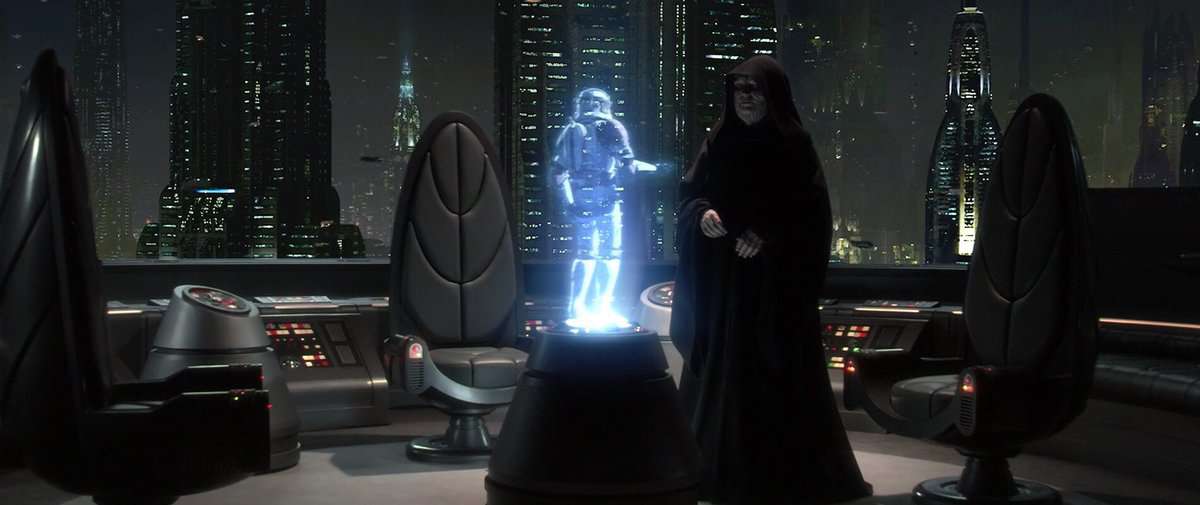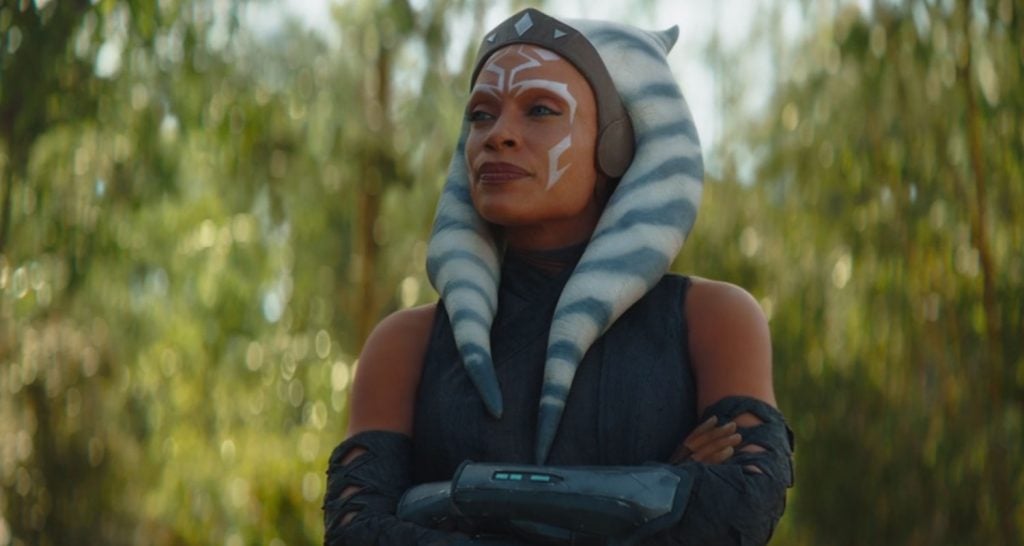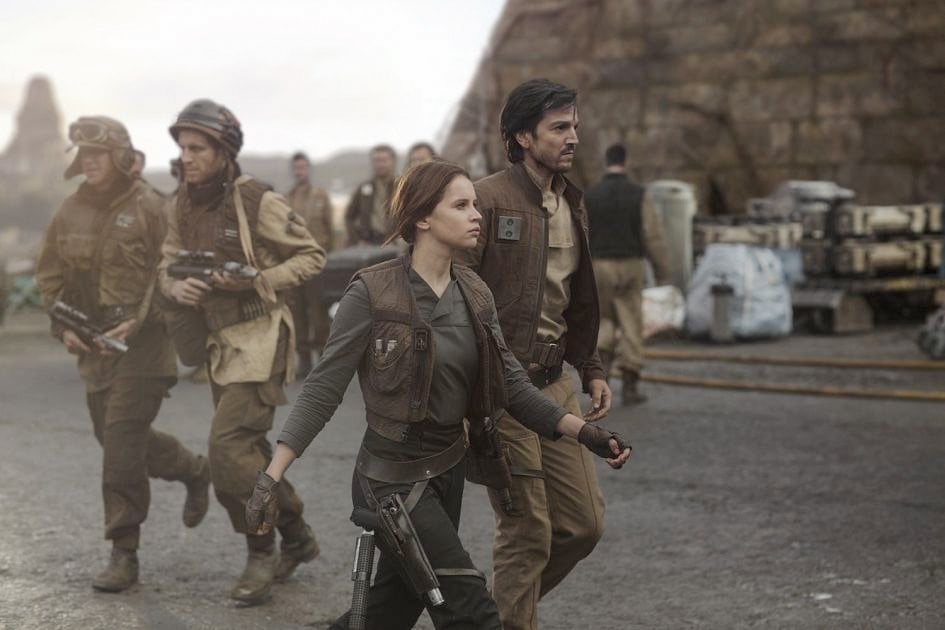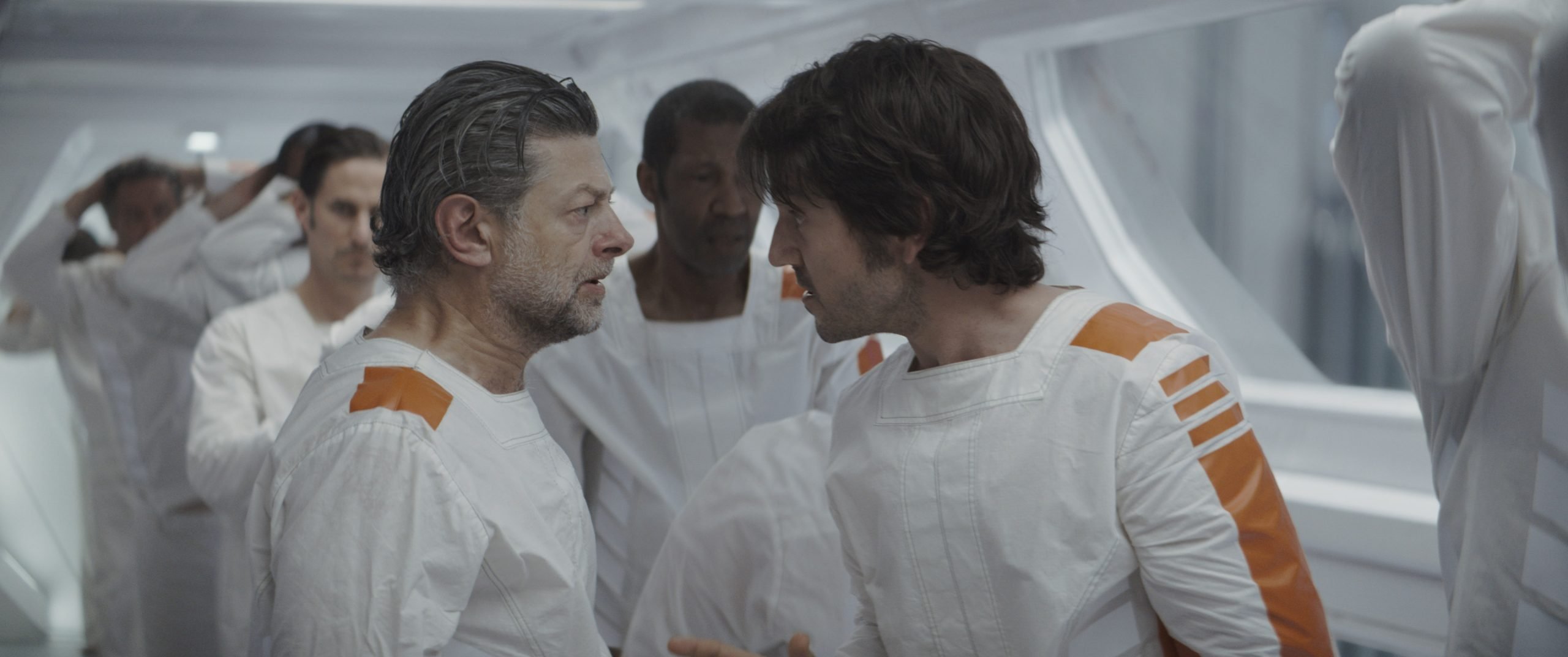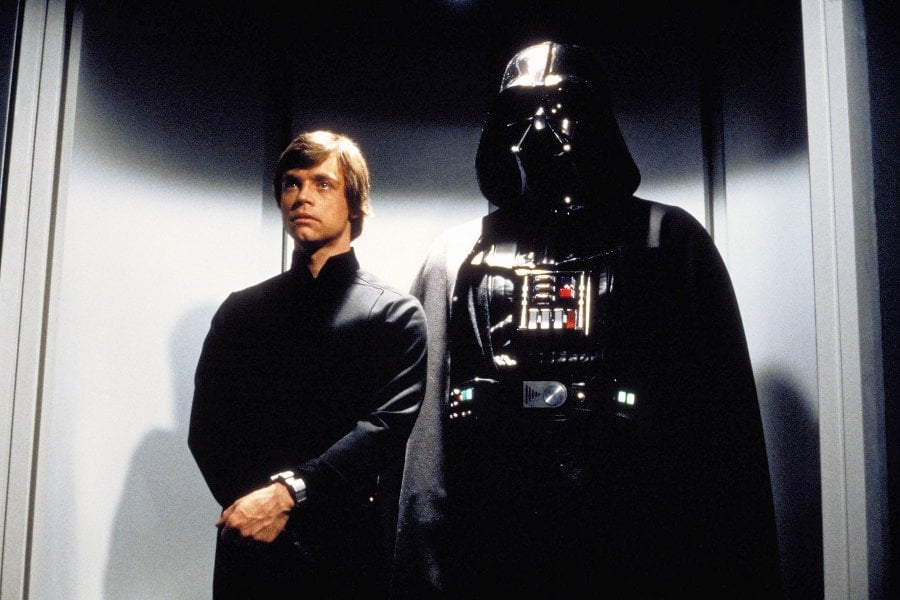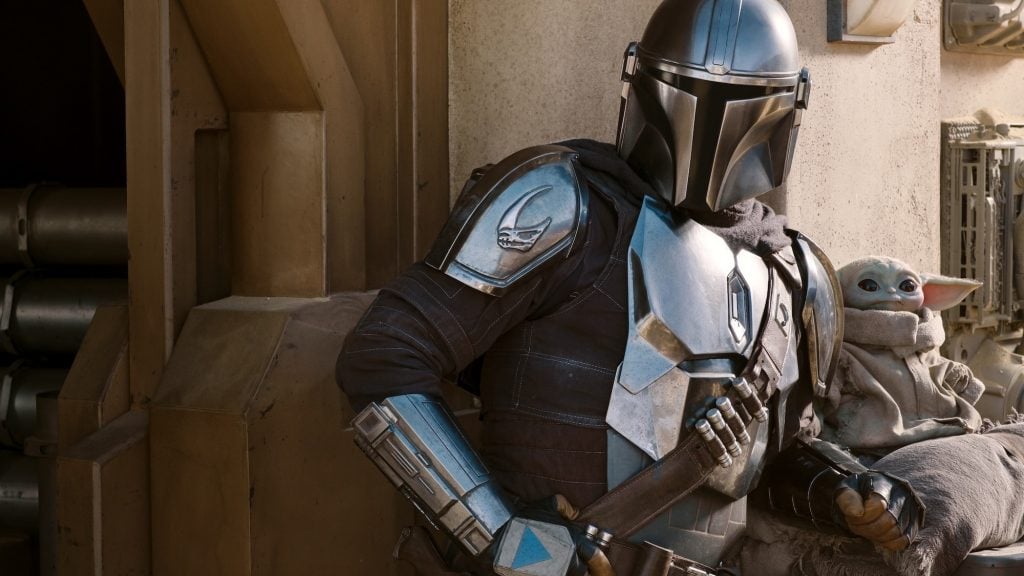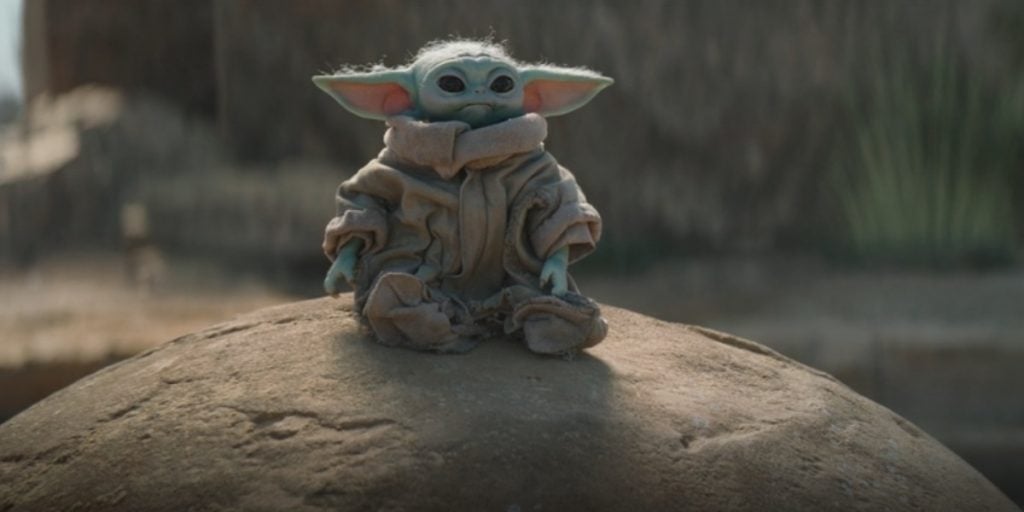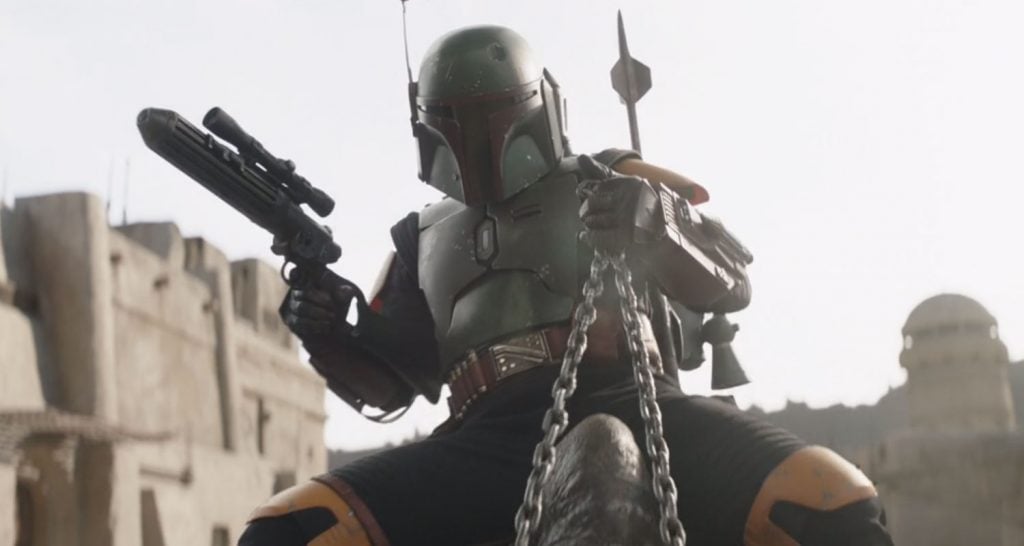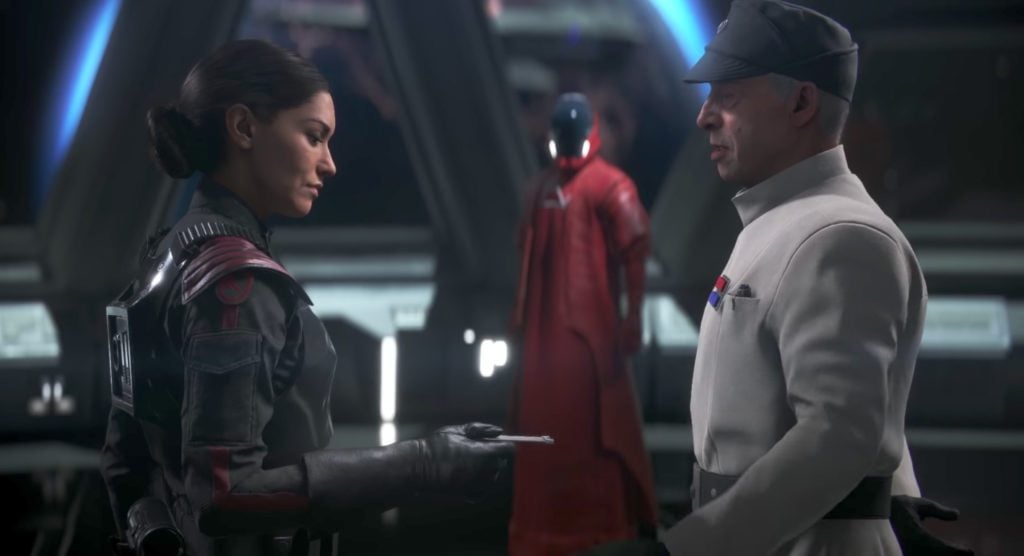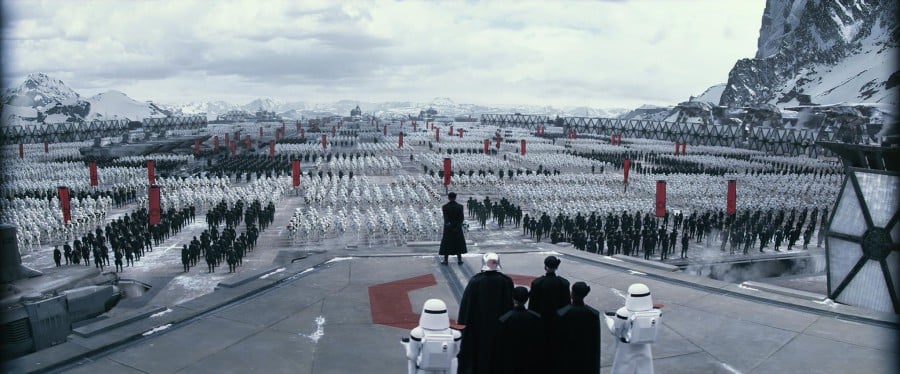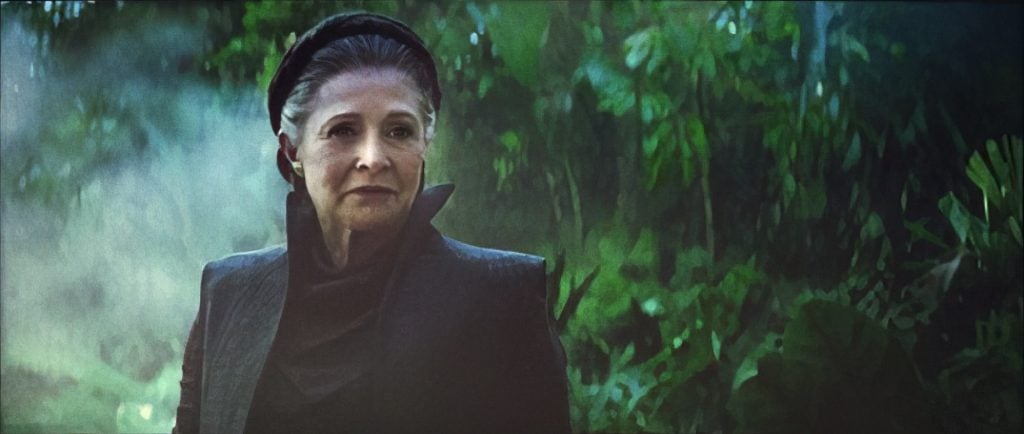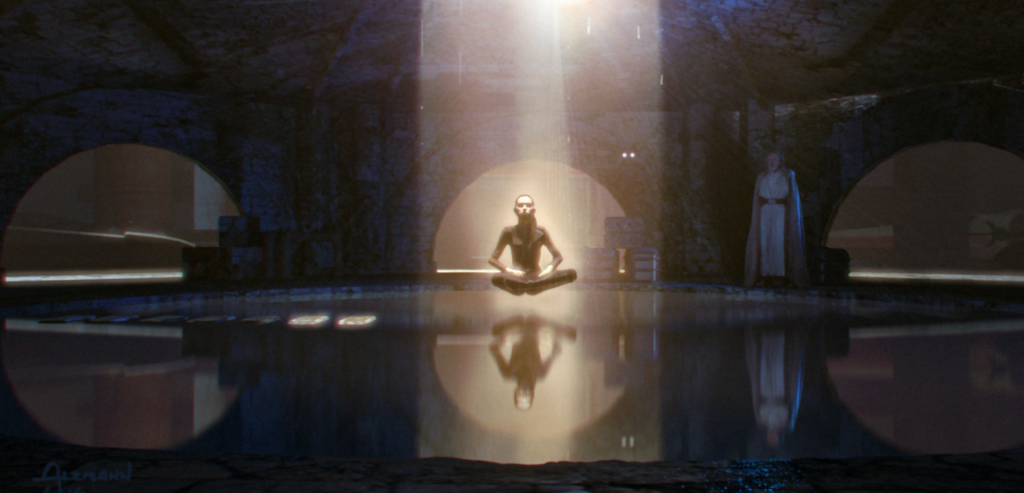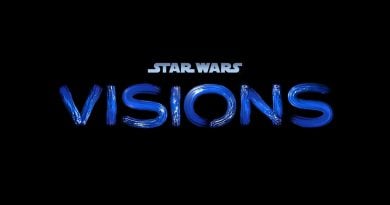Editorial: The Complete New ‘Star Wars’ Timeline, From Dawn of the Jedi to New Jedi Order
The Star Wars universe is vast and expansive across different media, including movies, TV shows, books, comics, video games, and more. This is the new canon Star Wars timeline, but first, a bit of history…
The canon of the Star Wars universe refers to the official continuity of the franchise, which is overseen by Lucasfilm and Disney and began with the original Star Wars movie released in 1977. A New Hope was followed by two sequels and a prequel trilogy, along with the Expanded Universe, which is usually considered to have begun with Alan Dean Foster’s 1978 Star Wars spin-off novel Splinter of the Mind’s Eye; although technically it began in October 1977 with the story The Keeper’s World, in Marvel Comics’ Pizzazz magazine.
It went on to have a plethora of comics, novels, and games, with the fictional universe spanning multiple eras. The names, symbols, and dates of the publishing eras were first introduced in October 2000 and were refined up to February 2015 — they were:
- Before the Republic (pre-25,053 BBY): The only major releases in this era were the Dawn of the Jedi comic series and novel.
- Old Republic (25,053 to 1,000 BBY): Includes the Tales of the Jedi comic series, the Knights of the Old Republic video games, The Old Republic MMORPG, the Knight Errant comic series, and the Darth Bane trilogy of novels.
- Rise of the Empire (1,000 to 0 BBY): The era leading up to and including the prequel trilogy as well as the subsequent reign of the Empire.
- Rebellion (0 BBY to 5 ABY): The era of the original trilogy and its associated novels, comics, and video games.
- New Republic (5 ABY to 25 ABY): The era following the original trilogy, including the Jedi Prince, X-Wing, The Thrawn Trilogy, Young Jedi Knights, and other novel series.
- New Jedi Order (25 to 40 ABY): The era of the New Jedi Order and the Dark Nest trilogy novel series.
- Legacy (40 to 140 ABY): The era of the Legacy of the Force and Fate of the Jedi novel series as well as the Star Wars: Legacy comic series.
However, in 2014, Disney acquired Lucasfilm and announced that they would be creating a new canon for the franchise. This meant that certain aspects of the Star Wars universe, such as the Expanded Universe (EU) of books, comics, and video games, would no longer be considered official continuity. Instead, a new canon would be established — it would encompass the movies, TV shows, books, video games, and comics released since the Disney acquisition.
Since then, the only previous material still considered canon are the six original trilogy/prequel trilogy films and The Clone Wars television series and film (3D). The Star Wars: Rebels animated TV series, along with all Marvel Star Wars comic books and novels beginning with A New Dawn are also considered part of the new canon, as they were the first published works integrating input from the Lucasfilm Story Group, which manages story concepts and in-universe details across all forms of media.
At the latest Star Wars Celebration in London that happened in April, Lucasfilm announced three new movies along with an updated timeline that now looks like this:
Dawn of the Jedi > The Old Republic > The High Republic > Fall of the Jedi > Reign of the Empire > Age of Rebellion > New Republic > Rise of the First Order > New Jedi Order
And so here we are, with nine eras in the timeline. I believe this is one of the biggest things stopping a lot of the movie fans from digging deeper into the current EU. On Disney Plus, we have the excellent chronological order option for Star Wars, even if it does miss out the likes of Tales if the Jedi.
I really wanted to write about the books and comics as well, but it was taking an age to complete this piece only focusing on the key points alone, so I recommend checking out the excellent Youtini for their guides and novel/comic timelines.
Dawn of the Jedi (? – 25,000 BBY)
This era was announced at the Star Wars Celebration 2023 in London, and is set to take place roughly 25,000 years before The Phantom Menace. This places it even before the Old Republic and anything we have seen in any form of media.
We don’t have a release date yet for the movie set to kick off this era of storytelling, but it’ll be directed by James Mangold (Indiana Jones and the Dial of Destiny) and will explore the discovery of the Force and the first Jedi who wielded it. Mangold is quoted as saying:
“I told Kathy [Kennedy] I wanted to make a kind of Bible movie, a kind of Ten Commandments of Star Wars – kind of a Cecil B. DeMille film about the arrival of the Force, and that’s what I’ve been pecking away at between press events. That’s the idea.”
He would go on to say:
“It’s a movie that both connects to the worlds we know but is also far enough away from it that I think there’s a lot of opportunities to tell a story freely, also… and not be so incredibly tied in by the knots and different story strands that are already in place.”
Essentially, we have no idea — other than these comments — of what will happen, but as a fan of the new High Republic stuff and a massive fan of origin stories, I am pumped to see what we get, not just in movies, but in the EU as well.
- New Movie from James Mangold (date TBA) – 25,000 BBY
The Old Republic (Around 25,000 BBY – 1,000 BBY)
The Old Republic era is now an official part of the franchise’s timeline. It’s usually talked about as part of the old Legends continuity, where it encompassed a 7,000-year span and included events such as the founding of the Republic, the Sith Wars, and the stories of beloved characters like Darth Revan, Satele Shan, Tenebrae, and Darth Malgus.
The successful 2003 video game Star Wars: Knights of the Old Republic is set in this era and features iconic characters like Darth Malak and Darth Revan. It essentially kickstarted the exploration of this period.
With this addition to the canon, the Star Wars franchise has a whole new opportunity to explore an exciting era full of epic Force-user action. After years of anticipation, fans can finally look forward to new projects set in this era, but whether they include some elements from Legends or go all fresh is anyone’s guess.
The High Republic (500 BBY – 82 BBY)
“The galaxy is at peace, ruled by the glorious REPUBLIC and protected by the noble and wise JEDI KNIGHTS.
As a symbol of all that is good, the Republic is about to launch STARLIGHT BEACON into the far reaches of the Outer Rim. This new space station will serve as a ray of hope for all to see.
But just as a magnificent renaissance spreads throughout the Republic, so does a frightening new adversary.
Now the guardians of peace and justice must face a threat to themselves, the galaxy, and the Force itself…”
It started out as “Project Luminous”, which began in September 2018 with invitations for Star Wars authors such as Claudia Gray, Justina Ireland, Daniel José Older, Cavan Scott, and Charles Soule to Skywalker Ranch — Lucasfilm offered them a “blank slate” in determining the new publishing project.
Up until Young Jedi Adventures, the High Republic was developed mainly in novel and comic book form, with phased releases that gradually expanded on this era a time of peace and prosperity for the galaxy. The era was marked by the expansion of the Republic and the establishment of new hyperspace routes. The Republic’s reach extended into the Outer Rim, and new worlds were discovered and settled. However, this expansion also brought new threats, such as the Nihil, a group of space raiders who terrorized the galaxy and posed a significant challenge to the Jedi Knights’ abilities.
At the heart of this era were the Jedi, at the height of their power and influence. The Jedi Order was dedicated to maintaining peace and justice in the galaxy, and its members were respected and revered by most of the Republic’s citizens. The Jedi operated from the Jedi Temple on Coruscant, and their numbers included both human and non-human members.
One of the most prominent Jedi of this era was Avar Kriss, who was known for her exceptional skill in the Force and leadership abilities. She was a member of the Jedi Council and played a key role in the Order’s efforts to combat the Nihil. Other notable Jedi from this era include Stellan Gios, Loden Greatstorm, and Elzar Mann.
The High Republic era is significant for several reasons. It was a time of relative peace and stability in the galaxy, and it saw the Jedi Order at the height of its power and influence. It also represents an opportunity for Star Wars creators to explore new stories and characters, including the upcoming live-action show The Acolyte, which is set at the end of the era.
“In a world of shadowy secrets and emerging dark side powers, a former Padawan reunites with her Jedi Master to investigate a series of crimes, but the forces they confront are more sinister than they ever anticipated.”
Fall of the Jedi (Around 82 BBY – 19 BBY)
The Fall of the Jedi era in Star Wars refers to the period leading up to the original trilogy, where the Galactic Republic is threatened by the Separatist movement and a war breaks out between the Republic and the Separatists. The era also features the rise of Darth Sidious and the eventual fall of the Jedi Order.
The Separatist Crisis is a significant event in the Star Wars universe that led to the Clone Wars and eventually the Fall of the Jedi. It refers to the political and ideological conflict that emerged between the Galactic Republic and several planetary systems that seceded from it. The roots of the Separatist Crisis can be traced back to the early years of the Galactic Republic, which was plagued by corruption, political infighting, and economic disparity. The Separatist movement was fueled by discontent with the centralized government and the desire for greater autonomy.
The Separatist movement was led by Count Dooku, a former Jedi Master trained by Yoda who had turned to the dark side of the Force and become a Sith Lord. Dooku was a charismatic and influential figure who used his power and influence to recruit several systems to his cause.
The Separatist Crisis came to a head in Attack of the Clones, when the Separatist movement threatened to break away from the Republic and sparked a debate about the role of the central government in the galaxy. Senator Padmé Amidala, a prominent critic of the Republic’s leadership, narrowly escaped an assassination attempt and fled to Coruscant to lobby against the Military Creation Act, which would give the Republic the power to raise a standing army.
Despite Padmé’s efforts, the act was passed, and the Republic began building a massive army of clones — thousands of which were already produced and trained under mysterious orders — on Kamino, a remote planet. The clone army was created with the help of the Jedi Order, which agreed to use its resources to fight against the Separatists.
The Separatist Crisis turned into the Clone Wars, a bloody conflict that raged across the galaxy for three years. The Jedi became generals in the war effort, leading the clone army into battle against the Separatists. The war saw numerous battles, both on the ground and in space, and caused widespread destruction and loss of life.
The Separatist Crisis also marked the beginning of the end for the Jedi Order, as their involvement in the war brought them into direct conflict with the Sith. The crisis ultimately ended with the execution of Order 66, which was enacted by Chancellor Palpatine to wipe out the Jedi Order and consolidate his power as the Galactic Emperor. One of the defining events of the Fall of the Jedi Era is the Siege of the Jedi Temple, which takes place towards the end of the Clone Wars. The Siege was first depicted in Revenge of the Sith, and later in other media, such as The Mandalorian and Obi-Wan Kenobi series.
Order 66 was a pivotal event in the Star Wars saga; a contingency order that was programmed into the clone troopers by the Sith Lord Darth Sidious, who was secretly manipulating the war between the Galactic Republic and the Separatist Alliance and posing as Chancellor Palpatine. The order was carried out with deadly efficiency, resulting in the near extinction of the Jedi Order.
Only a handful of Jedi managed to survive the purge, including Yoda, Obi-Wan Kenobi, and a few others. They went into hiding and tried to regroup, but the Jedi Order was effectively disbanded, and the galaxy was plunged into darkness and tyranny under the rule of the newly formed Galactic Empire.
The aftermath of Order 66 was explored in various forms of media, including the novel Ahsoka — which follows the story of Ahsoka Tano after The Clone Wars — and The Bad Batch.
- Episode I: The Phantom Menace (1999) – 32 BBY
- Episode II: Attack of the Clones (2002) – 22 BBY
- The Clone Wars animated series (2008-2020) – 22 BBY to 19 BBY
- Episode III: Revenge of the Sith (2005) – 19 BBY
Reign of the Empire (19 BBY – 9 BBY)
The Reign of the Empire is one of the most beloved and intriguing periods of the Star Wars universe. It spans from 19 BBY to 9 BBY, and it was a time of great change in the galaxy. The Clone Wars had just come to an end, and the Galactic Republic had been reorganized into the Galactic Empire. The new emperor, Sheev Palpatine, had taken control of the government and the military, and he had set about consolidating his power.
Under Palpatine’s leadership, the Empire quickly established its dominance over the galaxy. The Jedi Order, once the defenders of peace and justice, had been branded traitors and wiped out. With the Jedi gone, the Empire had no real opposition, and it was free to do as it pleased. It quickly expanded its territory, taking over entire planets and systems. It also established the Imperial Navy (a Grand Army of the Republic rebrand), which was tasked with maintaining order and enforcing the Empire’s will.
The Empire’s rule was harsh and authoritarian. Civil liberties were restricted, and dissent was not tolerated. The Imperial military was everywhere, and citizens lived in fear of being reported for any perceived violation of the law. Despite the Empire’s iron grip, there were those who resisted its rule. The Rebel Alliance was eventually formed by a group of brave individuals who were committed to overthrowing the Empire and restoring freedom to the galaxy.
The Reign of the Empire era, covering the construction of the Death Star, political turmoil across the galaxy, and the eventual creation of the Rebel Alliance, represents the nascent days of Palpatine’s new order. It has been explored in a pair of standalone films (the biographical Solo and the A New Hope lead-in Rogue One), and Obi-Wan Kenobi. It also includes the animated The Bad Batch series. On top of the many novels and comics that have expanded on this era, the Star Wars Jedi video games are set in this era as well.
The Reign of the Empire may have been a time of darkness and tyranny, but it was also a time of great heroism and bravery. The Rebel Alliance’s struggle against the Empire serves as a reminder of the power of hope and resilience in the face of great evil. The legacy of this era continues to inspire new generations of Star Wars fans and serves as a cautionary tale of the dangers of unchecked power.
- The Bad Batch (2021 – current) – 19 to 18 BBY
- Solo: A Star Wars Story (2018) – 13 to 10 BBY
- Obi-Wan Kenobi (2022) – 9 BBY
Age of Rebellion (5 BBY – 4 ABY)
The Age of Rebellion era, also known as the Rebellion era, is one of the most beloved eras in the Star Wars franchise. This era covers the period from a few years before the Battle of Yavin (5 BBY) to the Battle of Endor (4 ABY), spanning the original trilogy of films, the Rogue One spinoff film, and two shows. It’s a time of war and resistance, where a group of rebels band together to fight against the oppressive rule of the Galactic Empire.
One of the highlights of the era is the animated series Rebels. The show introduces new characters such as Ezra Bridger and Sabine Wren, who quickly became fan favourites. The series takes place roughly five years before the events of A New Hope and shows the rise of the Rebellion as they take on the Empire. The show is a great example of how Star Wars can tell compelling stories outside of the films, and showcases the power of found family.
Another notable addition to the era is the spinoff film Rogue One. The movie follows a group of Rebels who set out to steal the plans for the Death Star, which leads directly into the events of A New Hope. The film is praised for its gritty and realistic portrayal of war, and the characters, particularly Jyn Erso and Cassian Andor, are some of the most complex in the franchise. The ongoing series Andor is expanding on the character of Cassian and showing us the earliest days of the organized Rebel Alliance.
Of course, the era is defined by the original trilogy, which is beloved by fans worldwide. A New Hope introduced us to the classic story of a farm boy who becomes a hero, while The Empire Strikes Back expanded the mythology and raised the stakes. The trilogy’s final instalment, Return of the Jedi, brought the story to a satisfying conclusion, with the Rebels defeating the Empire and the redemption of Darth Vader.
The Rebellion era is a time of hope and resistance, where a group of rebels stood up against an overwhelming force and fought for what was right. It’s a timeless story that resonates with audiences today, and it’s easy to see why it has captured the hearts of so many. Whether it’s through the films, television shows, or other media, the Rebellion era continues to be a beloved and essential part of the Star Wars franchise.
- Andor (2022- Current) – 5-0 BBY
- Star Wars: Rebels (2014 – 2018) – 5-0 BBY
- Rogue One: A Star Wars Story (2016) – 0 BBY
- Episode IV: A New Hope – 0 BBY/ABY
- Episode V: The Empire Strikes Back – 3 ABY
- Episode VI: Return of the Jedi – 4 ABY
The New Republic (4 ABY – 33 ABY)
The New Republic era in the Star Wars universe is a fascinating period that fans have only recently been able to explore through various forms of media. This era takes place after the fall of the Empire, and while the galaxy is moving towards a positive transition, remnants of the Empire continue to pose a threat.
The era’s most prominent media offerings so far are the live-action series The Mandalorian and The Book of Boba Fett. The Mandalorian follows Din Djarin, a Mandalorian bounty hunter on a mission to find a home for the adorable Grogu, a member of the same species as Jedi Master Yoda. As the show progresses, Din and Grogu form a strong bond in a Lone Wolf and Cub kind of way, which eventually leads to Din’s decision to protect Grogu at all costs.
The Book of Boba Fett mostly takes place after the events of The Mandalorian‘s second season and follows Boba Fett as he seeks to establish his rule over the criminal underworld of Tatooine following Jabba’s death in Return of the Jedi.
The New Republic Era also has tie-in media that explores this period further. For example, the Star Wars: Aftermath trilogy of novels by Chuck Wendig takes place immediately after the events of Return of the Jedi and explores the immediate aftermath of the Empire’s fall. These books delve into the formation of the New Republic and the challenges it faces in the wake of the Empire’s collapse.
Additionally, the video game Star Wars Battlefront II (2017) features a single-player campaign that takes place in the New Republic Era. The campaign follows Iden Versio, the commander of the Imperial Special Forces Unit Inferno Squad, as she defects to the Rebel Alliance and helps to establish the New Republic.
Overall, the New Republic Era is a period full of potential for exploration and storytelling. With the recent influx of media set during this time, it’s exciting to see what other stories and characters will emerge in the future. Soon, the Ahsoka and Skeleton Crew live-action series will expand on this era, and all of the current New Republic TV shows will culminate with a theatrical film directed and written by Dave Filoni.
- The Mandalorian (2019 – current) – 9-12 ABY
- The Book of Boba Fett (2021) – approximately 9 ABY
- Ahsoka (2023) – ?
- Skeleton Crew (2023) – ?
- New movie from Dave Filoni (date TBA) – ?
Rise of the First Order (33 ABY – 35 ABY)
This era is marked by the rise of a new successor to the Empire called the First Order, which was led by General Hux, Supreme Leader Snoke, and Kylo Ren (Ben Solo). This new regime was obsessed with restoring the former glory of the Empire and was willing to go to great lengths to achieve that goal, including destroying entire planets and wiping out any opposition to their rule.
The First Order also employs vast armies of stormtroopers, who are indoctrinated from a young age to be loyal to the First Order and to follow orders without question. Despite their power and influence, the First Order is not invincible. Throughout the sequel trilogy, a small band of Resistance fighters, led by General Leia Organa, stand up against the First Order, even in the face of seemingly insurmountable odds. Their perseverance and bravery inspire hope in others and ultimately lead to the downfall of the First Order.
The era began with the release of The Force Awakens in 2015, which reintroduced audiences to the Star Wars universe after a decade-long absence from the big screen. The movie was a commercial success, grossing over $2 billion worldwide, and was praised for its charismatic new characters, like Rey, Finn, and Poe Dameron. The sequel, The Last Jedi, was a more divisive entry in the series. Nevertheless, it continued the story of the First Order’s rise to power and grossed over $1 billion worldwide. The final instalment of the sequel trilogy, The Rise of Skywalker, received mixed reviews from fans and critics alike, and was criticized for its messy plot, rushed pacing, and lack of coherence, but still managed to bring a conclusion to the storylines of the new characters and the Skywalker Saga as a whole while also making just over $1 billion worldwide.
Throughout this era, the animated series Star Wars Resistance also aired, exploring the lives of pilots and other inhabitants of the galaxy during the time of the First Order’s rise to power.
Overall, it is undoubtedly an important era in the Star Wars canon, as it established a new generation of characters and set the stage for the future of the franchise. While not without its flaws, the sequel trilogy and associated media provide a compelling and entertaining exploration of this fascinating era.
- Resistance (2018 – 2020) – 34 ABY
- Episode VII: The Force Awakens (2015) – 34 ABY
- Episode VIII: The Last Jedi (2017) – 34 ABY
- Episode IX: The Rise of Skywalker (2019) – 35 ABY
New Jedi Order (50 ABY – ?)
The New Jedi Order era is a period of unknown and exciting possibilities in the Star Wars universe. While not much is known about this era yet, fans can look forward to some exciting projects.
This era is set after the events of the sequel trilogy and will likely focus on the rebuilding of the Jedi Order by Rey Skywalker. At the end of The Rise of Skywalker, Rey adopts the Skywalker name and uses a yellow lightsaber, hinting at her future as a Jedi. The upcoming film by Sharmeen Obaid-Chinoy will likely explore this further and show Rey’s journey to create a new Jedi Order roughly 15 years after The Rise of Skywalker.
In addition to the film, the New Jedi Order era also has the potential for other exciting stories. With the Jedi Order being rebuilt, new characters could emerge as Padawans or Jedi Knights. The era could also explore the relationship between the Jedi and the wider galaxy, as they work to bring peace and justice to the galaxy once again. Does the galaxy even need them anymore?
- New Movie from Sharmeen Obaid-Chinoy (date TBA) – 50 ABY
Alexander has been a lifelong Star Wars fan having started watching with his elder brother in the early 80's through to watching The Phantom Menace with same brother in cinema as a 21 year old with beer.
His love for the franchise has never waned.
A published comic book writer and letterer but when not watching or reading Star Wars is usually hacking computers for work.
Follow on twitter @Muldwych


